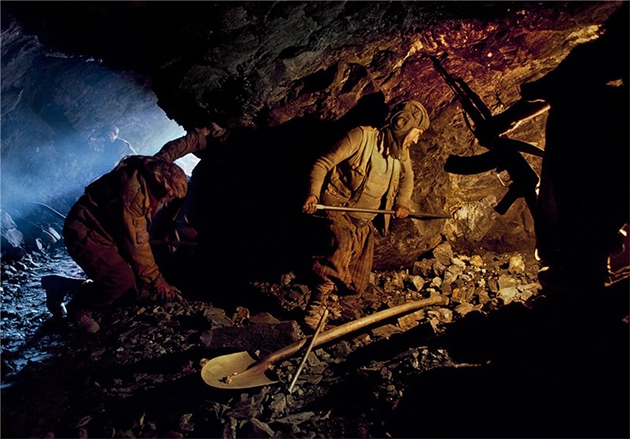Afghanistan has large energy and mineral resources which can contribute to the country’s economy to a great extent. Afghanistan is also known as a strategic hub in Central Asia located at the crossroads of pipeline routs and a transit country for oil and gas. The mineral fields in the country number more than 1400 containing chromite, coal, copper, gold, iron ore, natural gas, petroleum, etc.
A research shows that Afghanistan has an estimated $3 trillion of untapped minerals. There are 12 copper mines in Afghanistan including Mes Aynak – one of the world’s largest untapped deposits and a 5,000-year-old archeological site in Afghan province of Logar containing an estimated 12.5 million tons of copper – and six lapis mines, the largest is located in Badakhshan province.
The Soviet specialists discovered huge gas reserves in Afghanistan in 1960s and built the first gas pipeline in the country to supply gas to Uzbekistan – the fact which is known to only a few Afghans. The Soviet Union is said to receive 2.5 billion cubic meters of Afghan gas per year.
In spite of the fact that Afghanistan possesses vast mineral and gas reserves, it produces more than 90 percent of world’s supply of opium, which is mostly cultivated in troubled areas and has changed to the militants’ machine of war.
According to recent reports, the cultivation of narcotic drug covered 328 hectare land in insecure provinces, especially Helmand, last year – which shows 63 percent increase comparing to that of 2016. In the current year, the counternarcotic campaign has not been launched in Helmand province so far in light of escalated war and conflict. “Campaign against cultivating drug had a symbolic aspect. People were told if anyone cultivated drug, they would be prosecuted legally. But unlike previous years, the government’s anti-drug campaign team or group did not come to destroy the cultivation,” Ata-ullah Afghan, the head of provincial governor of Helmand, is cited as saying.
Regarding mineral resources, a report recently released by Global Witness says that the self-style Islamic State (IS) group controls large talc, marble and chromite mines in eastern part of the country, mainly in Achin district in Nangarhar province, where the US military dropped “the mother of all bombs” against IS-held caves in April 2017.
Nick Donovan, campaign director for Global Witness, said that while the Taliban’s engagement in talc mining is well established, the move by IS group into mining the mineral seemed to follow a pattern whereby the groups seek to seize and exploit resources as way of funding its efforts – as IS had moved into crude oil refining in Iraq and Syria.
Worst of all, Nargis Nehan, the acting minister of Ministry of Mine and Petroleum, says that in addition to the Taliban’s involvement in illegal mining, a number of Afghan MPs are also involved in this issue. She added that some MPs moved into mining coal in Dar-e-Souf. To prevent it, Nehan said she had suggested establishing a checkpoint with 300 policemen to the Interior Ministry. According to her, if talc is managed well, Afghanistan will be one of the ten largest talc producers in the world.
The involvement of insurgent groups, mainly the Taliban and IS, in drug trafficking and illegal mining is beyond doubt. For instance, the Beijing-based China Metallurgical Group Corp (MCC) obtained the rights in 2007 to extract copper form Mes Aynak. However, Chinese engineers stalled their work following a series of rocket attacks in 2012 and 2013. The Taliban also killed eight mine-clearing specialists in 2014, which shows their direct concern to Afghanistan’s mineral resources and their engagement in them.
Considering Afghanistan’s rich mineral resources, a number of political pundits believe that the ongoing conflict in Afghanistan is part of a profit driven agenda, i.e., a war of economic conquest and plunder or “a resource war”.
To view the aforementioned issues, one will clearly notice that the insurgents are widely funded by narcotic drug and illegal mining. That is to say, these two financial sources of the insurgents are the main reasons behind the protracted war in Afghanistan. I have constantly pointed out in my commentaries that for defeating the insurgents, Kabul government and its international allies will have to eradicate the factors supporting war. Indeed, if insurgents are pressured financially, they will not be able to continue the war.
Secondly, the corruption in the government’s machinery such as the engagement of MPs in illegal mining and widespread bribery in judicial system will impede the war on terror. For instance, the issue of missing pistols from the Interior Ministry leaked to the media shows the prevailing corruption in the government’s body. Perhaps, those pistols might have been sold illegally. What if pistols and rifles are sold to the Taliban? It does not seem impossible. Hence, corruption in the government is one of the main reasons behind the protracted war. If Kabul government seeks to win the war on terror, it has to put an end to corruption and prosecute the corrupt officials – be it MPs, influential figures, generals, etc.
Moreover, the government has to protect the mineral resources of Afghanistan and exploit them in the best possible way. If the country’s mineral resources are used appropriately, Afghanistan will be changed into a strong economy and the rate of unemployment will decline tremendously. To view other countries, they protect their mineral resources the same as the life of their people. Afghanistan is called “a poor man lying on gold mines” because it is rich in mineral resources but does not exploit them properly. Hope, this “poor man” uses his “gold mines” to put an end not only to poverty but also conflicts and stop the machine of war.
Home » Opinion » Drug and Illegal Mining – The Machine of War in Afghanistan
Drug and Illegal Mining – The Machine of War in Afghanistan
| Hujjatullah Zia

